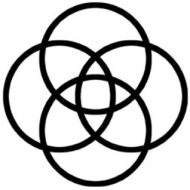Minimalism is more than just clean lines and decluttered spaces. It’s a mindset, a conscious choice to focus on what truly matters and eliminate what doesn’t. Whether you’re looking to reduce stress, regain time, or live with more purpose, minimalism offers a powerful shift.
Minimalism isn’t just about throwing things away. It’s about changing the way you see the world and yourself.
I have read several books on minimalism and I have been listening to all kinds of advice over the years. Today, I was thinking, what are the main things that have stayed inside me? I wrote down what came to mind and these are the 7 main things that came to mind:
1. Does it spark joy?
This now-famous question from Marie Kondo is not just about happiness. It’s about energy. Your things either uplift you or drain you. Joy is the compass. If an object makes you feel heavy, guilty, or indifferent—it doesn’t belong in your life.
2. One in, one out
This rule prevents clutter before it starts. Every time you bring something new into your space (a shirt, a book, a gadget), something else must go. Usually it is easier if it is from the same category, for example, if we get a new book we have to give away an old one. It’s a simple way to stay balanced and resist the unconscious hoarding impulse.
3. Do I own multiples of the same thing?
Duplicates often reveal unconscious habits. Do you really need five scissors or twenty pens at home?
4. If I lost it, would I buy it again?
This is a powerful litmus test. If the object disappeared today, would you feel the need to replace it buying the same thing again? Or would you relief that it’s gone?
5. Have I gone more than a year without using it?
If something has collected dust for over a year, it’s likely it doesn’t fit your life anymore. Letting go of these items creates space not just physically, but mentally, it’s like closing old internet browser tabs in your mind. A trick is putting things inside boxes with a date, if after a year, you never need to open the box you can get rid of everything inside it.
6. Am I keeping this to project a certain image?
This is one of the deepest and most revealing questions. Sometimes, we hold on to objects because they say something about the person we wish we were. Maybe it’s a designer bag, a yoga mat, or an expensive camera. If you’re not truly using it, it might be part of a fake identity you’re trying to maintain. That illusion weighs you down. These unneeded things will make you to subconsciously compare yourself to others and you will accumulate things just so you don’t feel inferior to others.
7. Can I talk passionately about this object?
Every item in your life should mean something important to you or do something useful. If you can’t speak with love or genuine interest about it, it may be dead weight. Let your possessions tell a story worth telling.
Minimalism Is a Mindset, Not a Trend
Practicing these principles won’t just declutter your home, it will declutter your identity. You’ll begin to notice how each item in your life either supports or sabotages the person you want to become. And when your outer world aligns with your inner values, everything gets easier: focus, peace, creativity, and even joy.
When your identity shifts, your habits do too. You’ll become the kind of person who no longer hoards or shops impulsively. You’ll be the kind of person who lives with clarity, purpose, and lightness.
Minimalism isn’t about less for the sake of less. It’s about more room for what matters: love, meaning, growth, peace. As a beginner, you don’t need to change everything overnight. Choose one principle. Apply it to one area of your life. And let the ripple effect begin.
Simplicity is not the destination, it’s the path.
